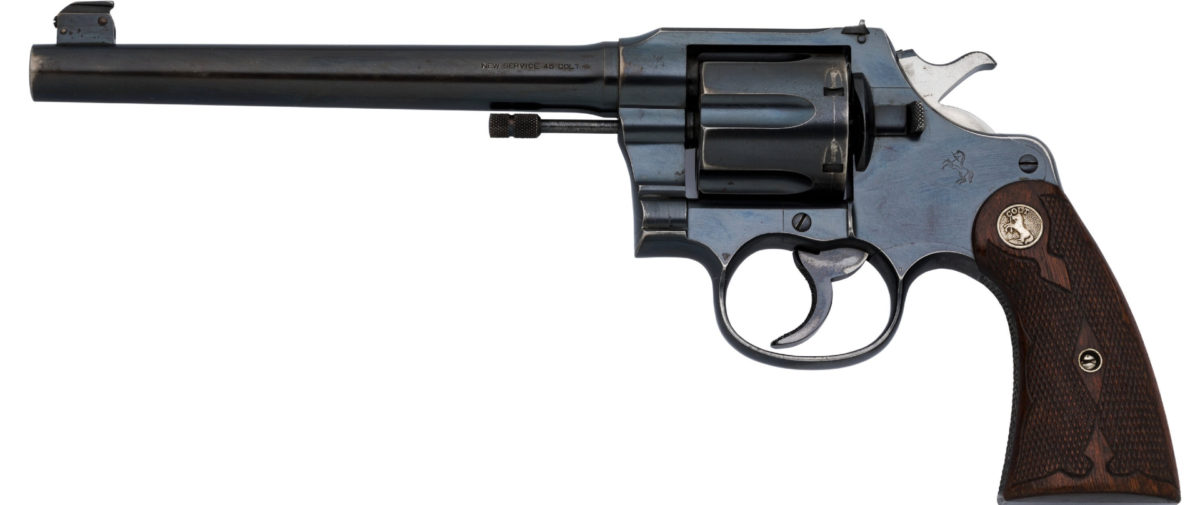Sam Colt did not invent the revolver. But what he did invent was the first practical revolver mechanism that could be mass-produced with enough quality that all the parts were interchangeable with any other gun of the same model without the need for a special gunsmith. After the business failure of his first revolver in 1836, the mechanism of Colt’s single-action cap-and-ball revolvers remained unchanged from the time of the production of his revamped Walker Model Colts in 1847 and subsequent other models until a decade past Colt’s death on January 10, 1862.
Colt even had other gunsmiths create new designs, such as the Root Model pistols and rifles. But there was one thing he refused to do to the very end: produce a double-action revolver. His logic was simple: Double-action revolvers required more parts to make the gun function, and more parts meant more chances of parts failure. He also believed that the extra trigger-finger pressure that was needed to make a double-action revolver self-cock and fire could cause the gun to sway off target. (A single-action revolver only requires the manual cocking of the hammer and light squeezing of the trigger to fire it.)
The first double-action revolver that the Colt factory produced after Sam Colt’s death was the 1877 Lightning Model that fired .32-, .38- and .41- caliber cartridges. The larger Model 1878 double-action fired .45, .44-40 and smaller cartridges. Both guns utilized some of Colt’s original designs. It was not until 1892 that a variety of .32-, .38- and .41-caliber swingout-cylinder double-action revolvers were brought out. They were manufactured through the turn of the century.
These smaller-caliber guns paved the way for the biggest cartridge revolver that Colt ever made: the Model 1898 double-action, swing-out-cylinder, six-shot “New Service” Model. Originally produced in caliber .45 Long Colt, then .44-40, this giant of a gun became so popular that it was manufactured until 1944 in a variety of other calibers from .38 Special to .45 ACP (automatic) and .476 Eley. It was during the first decade of the 20th century, the sunset years of the Old West, that the double-action New Service Colt in its man-stopping .45 Long Colt caliber began to replace the venerable old bread-and-butter Single Action Army Model Colts. In its original 71⁄2-inch barrel length, the New Service Colt tipped the scales at 2 pounds 9 ounces, a quarter-pound more than the Single Action Army at 2 pounds 5 ounces.
The pistol’s massive grip required a big hand to hold the gun steady and still have enough trigger-finger length left to squeeze the trigger. But one of the major reasons for the instant popularity of the New Service revolver was that— unlike the previous Model 1877 and 1878 double-action Colts and the Single Action Army model that only extracted spent cartridge cases one at a time—it had a star-shaped extractor that ejected all six spent cartridge cases simultaneously, like the Smith & Wesson, its biggest competitor. The New Service Colt could also be fired single-action by manually cocking the hammer first. On the downside, it took some old-time single-action users a while to learn to release enough pressure on the trigger to let it lock back into forward position again before the next shot could be fired double-action, a memory lapse that could often be a fatal one. But the gun’s accuracy was such that in his pioneer 1954 book Colt Firearms, Jim Serven, the patriarch of Colt historians, wrote, “On November 15, 1907, the first perfect revolver score was made with one of these revolvers, a world record.”
The New Service’s most-heralded early days occurred during the series of Mexican revolutions that lasted from 1910 to 1920. The big revolver was also popular with policemen and badmen alike throughout the United States. And during World War I, as the Model 1917, it became the standard .45-caliber sidearm of the U.S. Army along with a similar Smith & Wesson Model 1917 revolver and the Model 1911 semiautomatic Colt.
Altogether, about 356,000 New Service Colts were made, in barrel lengths of 4 to 71⁄2 inches. The standard finish was blue, nickel finish was optional; standard grips were black rubber on the civilian models and walnut on the 1917 military model; and custom engraving and pearl or ivory grips, plain or carved, could be special ordered.
In a booklet printed specifically about its New Service revolver, the Colt factory provided a simple endorsement of the giant pistol: “Take care of your gun and it will take care of you.” And in Colt Firearms, Serven wrote a succinct testimonial about the big revolver that summarizes its usefulness in just one sentence: “The ‘New Ser vice’ revolver is truly a he-man’s weapon, and it found especial favor among those who needed a powerful sidearm which could effectively stop a man or almost any animal on the American continent.”
Originally published in the December 2006 issue of Wild West.






